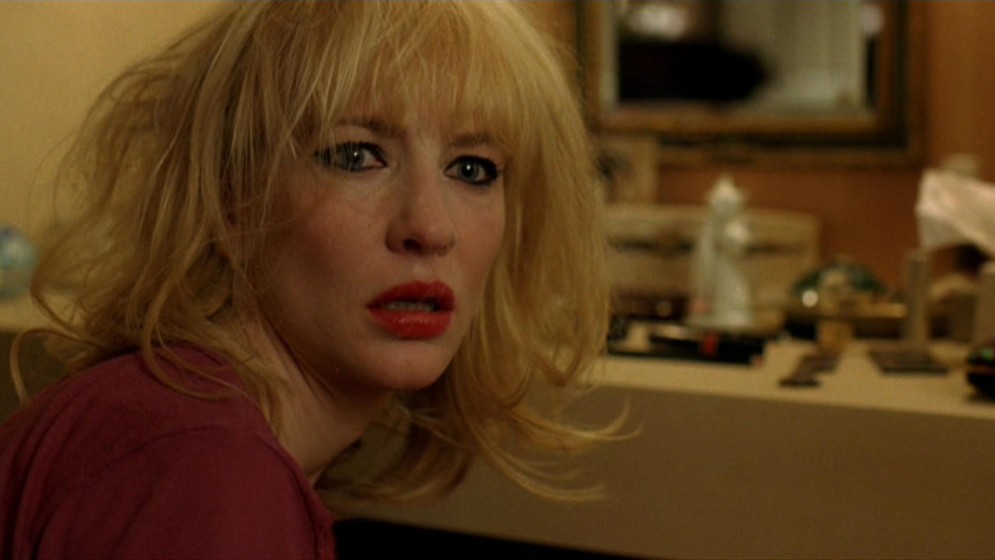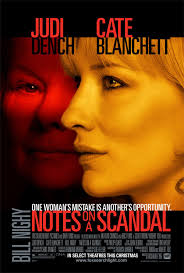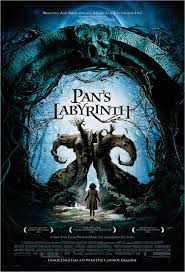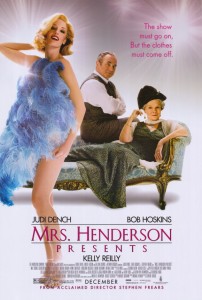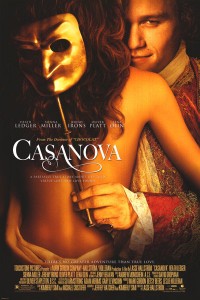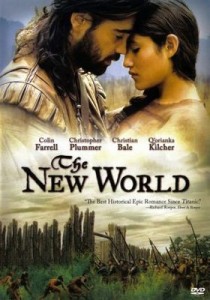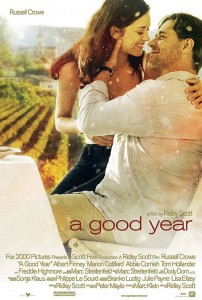Between 2005 and 2009 I was a programmer on CKDU 88.1 FM every Sunday morning with something called The Love & Hate Movie Show. I talked about what I was seeing and revisited some of my favourite films of old, pretty much what I do now here on FITI. I still have a lot of the scripts from those days, and thought I should share them here for archival reasons (and just for fun). As the blog’s fifth birthday approaches, what better time than now to take a look back at my (slightly edited) words originally written for broadcast.
Notes on a Scandal (2006)
Directed by Richard Eyre, Screenplay adapted by Patrick Marber (Closer)
From a Zoe Heller novel.
Starring Judi Dench as Barbara Covett, Cate Blanchett as Sheba Hart and Bill Nighy as Richard Hart
An intense drama set in a British public school. Dench plays Covett as Your Unreliable Narrator, an older, bitter woman who has lost any pleasure in her work as a teacher. She’s contemptuous, cerebral and very lonely. Blanchett’s Sheba comes along, the new art teacher, very naïve and beautiful, married to a much older man and with two children.
For the first time in a long time Blanchett really plays up her gamine, coltish glamour, and the cinematography works to compliment her. Covett is at first disdainful, but lets her curiosity get the better of her and slowly begins to yearn for her colleague. They become friends. Meanwhile Sheba enters into an ill-advised liaison with one of her 15-year-old students, and Covett finds out, and uses this guilty knowledge for her own purposes.
This is a film that from early on is pitched as very high drama. The score from Philip Glass emphasizes the tension and keeps it ratcheted up. It’s melodrama of the first order, held together by the sterling performances of the leads. The movie would probably be ridiculous if the two women’s performances weren’t absolutely on the money. The director, allowing us to join Barbara Covett’s narration, makes us complicit in her yearning, in her machinations. We share her smug superiority, and feel her implied loneliness, and we support her… to a point. We also have a lot of sympathy for Sheba, but also only to a point.
These are deeply flawed characters, and we climb into their psyches whether we want to or not. And in them we are in for a ride. It’s a sophisticated British soap, not with the kind of intimacy or grit of a Mike Leigh, but I think its impossible not to be carried away in all the sturm und drang. Not the sort of movie that will give you a second to check your watch, Notes on a Scandal is a delicious, scab-picking fun cinematic experience, and I recommend it highly.
Pan’s Labyrinth (2006)
Written and directed by Guillermo del Toro
It’s funny how trailers for movies in a foreign language never suggest that the film is in a foreign language. It’s as if subtitles are trailer kryptonite. I guess you can’t expect to get people to see the film if they have to read.
People will say this isn’t a kids movie, and I’d agree, but I think it has a lot more in common with the Grimm’s fairy tales and some of the darker fables of our culture.
The story is set in the Spanish Civil War. Ofelia is a little girl who is brought by her pregnant mother to live with her stepfather, a monstrous fascist commander of a military regiment in a forested area that doesn’t look anything like Spain that I’ve seen in pictures.
Ofelia finds a labyrinth behind the house in which she stays with her mother and explores it, discovering a faun and other magical creatures, and a legend that states she is an elemental princess. In order to reclaim her true throne she must perform a series of tasks. Meanwhile, in the concurrent reality of her life, her stepfather is becoming more irrational and unpleasant and a small group of freedom fighters is planning an attack, with help from a spy on the inside of the military operation.
Del Toro has said his film is heavily allegorical, it’s why he enjoys fantasy. I guess there are plenty of ways to interpret this picture, but really, for me, foremost, it’s a dark fairy tale, with amazing creatures and nightmarish visions. I found it to me a fully realized cinematic world, frightening, certainly, but mostly wondrous. It’s also tragic. Expect blood and violence in the movie, and more than a little gore. But this isn’t some kind of horror, it’s an imaginary exploration of the way many children perceive the world.
I don’t know if I’d recommend it for children, however, even those with accompaniment may find it hard to take. It would have given me the heebie jeebies as a child. But otherwise I have no reservations promoting it to anyone with a taste for really well executed fantasy, for those wanting to take a trip into another world.
Mrs Henderson Presents (2005)
You may be familiar with British director Stephen Frears’ work. He brings a certain grit and authenticity to his films, which include Dangerous Liaisons, The Grifters, High Fidelity, and Dirty Pretty Things. The only thing about Mrs Henderson Presents that marks it as a Frears film is the fact the characters are well fleshed out. You do believe these people exist, but they’re set in such a fluffy drama, I was surprised it was Frears behind the camera.
Set in pre-World War II London, it stars Judi Dench as Mrs Henderson, a suddenly widowed Londoner with more money than she knows what to do with. With her miniature dachshund under her arm, she takes up hobbies, none of which she enjoys until she decides to buy a west end theatre. She hires a theatre manager named Van Damm, played by Bob Hoskins. Dench and Hoskins are great together, and provide the film’s biggest laughs with their combative dynamic. Their first efforts for the theatre are a success, but when things begin to slip, Mrs Henderson decides what the shows need is nudity, something of a scandal at the time. Fortunately, she has the ear of a bigwig in her majesties’ government, played with some aplomb by Christopher Guest. I guess he’d played faux British in Spinal Tap so they thought to cast him as upper crust Brit in this, and it works quite well.
The first half of the film is very charming, very funny, something fans of The Full Monty or any number of tastefully ribald British comedies will enjoy. A discussion of nipples is hilarious. I think what Frears is trying for here is more than just the recreation of a time and place, he’s going for the feel of old-fashioned British movies as well, such as those from the Ealing Studios. Drawing room comedy, I guess, with just a bit of salaciousness. I imagine the real audience for this film would be the older generation, anyone who remembers the 30s, 40s or 50s. If you are a younger person, you could bring your grandparents to see this and they would enjoy it. The nudity is there, but it’s artfully done. I certainly enjoyed the characters and the story.
I started to lose interest a bit in the second half of the film, which becomes more serious as the World War II begins and London is bombed by the German Luftwaffe. Actual film footage from the era is used liberally, but the world of the film seems so artificial and light, I found the juxtaposition of the raw black and white stock with the lush theatre scenes a bit jarring. Also, the melodrama is a bit much to swallow, and I think the lightness of the film buckles under the weight of seriousness later on.
There is still much to enjoy here, but I thought the funny bits much more successful than the moments where our heartstrings were being pulled.
Casanova (2005)
Casanova is the other big Heath Ledger film of the season. A few of you listening may recall Fellini’s version with Donald Sutherland, made in 1976. It’s not considered one of Fellini’s best films, but at least it was debauched. This film, if anything, suffers for being a little too tasteful.
It’s directed by Swede Lasse Halstrom, the director who gave us Cider House Rules and Chocolat, and if you liked those movies you won’t be disappointed here. He’s not going for sex, he’s going for costume drama slapstick and breezy romance and comedy. Not quite vigorous enough to be a farce, the film approaches that kind of energy in a few scenes, as if the Marx Brothers might appear around a corner as the Weird Merchants from Milan.
As it happens, Heath Ledger’s Casanova is the most notorious lover in Venice, a city of sin barely tolerated by Rome. But as his rep travels, Rome sends an inquisitor, played by Jeremy Irons, to clean the place up. Meanwhile, Casanova has had to agree to be married to a virgin, but has also fallen in love with another woman, Francesca Bruni. She is played by Sienna Miller in her first starring role post last summer’s tabloid Jude Law Nannygate kerfuffle. Bruni is a proto-feminist who writes heretical books under a masculine pen-name about the advancement of women. She is about to be married off by her mother, played by Lena Olin, to a wealthy dealer in pork, played by the always hilarious Oliver Platt.
What follows is a series of misadventures involving, mostly, mistaken identity and false identity. The thing is, Casanova is supposed to be this incredible lover, and I guess there are moments when one can understand why he is so attractive to the opposite sex, but film really just uses his legend as a springboard to this fluffy romantic comedy and jokes about rotund individuals threatening the canal-worthiness of gondolas. As that, much of it works. There are enough plot twists and surprises in the script to make it worthwhile, and the costumes, sets and performances are excellent, though Jeremy Irons has never played a more hissable villain, and he is a little ridiculous. Halstrom does have a way of telling a story that seems effortless—he’s nothing if not professional.
But I did feel a bit let down at the end. Where is the smut? I just think if the film is going to go to the trouble of earning an R rating, it would be great if it actually felt like the film was made by and for adults. I won’t say I didn’t have fun at Casanova, but it is one of those films where I could find plenty of ways I thought it could be improved. It’s funny, I mentioned Stephen Frears Dangerous Liaisons earlier, a film that was also about a notorious rogue in tights, but boy, was it sexy.
The New World (2005)
Terrence Malick directed The New World. For those who don’t know his work, he is an American filmmaker who has only made three other features in his career that began in the early 70s. Those films are Badlands, with Martin Sheen and Sissy Spacek, Days of Heaven, with Richard Gere, Brooke Adams and Sam Shepherd, and The Thin Red Line, the World War II drama from 1998 starring practically every male actor in Hollywood, including Sean Penn, Woody Harrelson, Nick Nolte, Jim Caviezel, and Adrien Brody.
It says something about his legend as a filmmaker when big name actors will take tiny roles in his films, just to say they were in them. See if you can spot Ben Chaplin and Jonathan Pryce in The New World, neither with speaking roles.
Malick uses images and sound the way Stanley Kubrick used to. He understands that narrative in filmmaking isn’t just about following words on a script. I would say he breaks most of the rules of Hollywood cinematic storytelling, rules that generally are good not to be trifled with, but he makes it work. The opening of, and ending of, The New World reminds me of nothing but 2001: A Space Odyssey, in it’s use of score and image. This is a big budget art movie, as ambitious and different as anything you’re liable to see in the cinema this year.
It’s being marketed along the lines of Titanic, this epic romance. I guess that’s fair. It certainly is a long movie, and at its core is an elemental love. It’s set in the early 1600s, as British explorers led by Christopher Plummer’s Captain Newport land on the shores of an unspoiled Virginia. There they encounter the curious “naturals” as they call them, Native Americans, and one of the crew, John Smith, played by Colin Farrell, falls in love with the native princess, played by 15-year-old newcomer Q’Orianka Kilcher. The film takes place over nine years, during which the British invaders relationship with the native American’s sours, and challenges the love across cultures.
Again, I make the 2001 analogy. This may as well be science fiction. The chasm between the alien cultures in this film is astonishing, and so well expressed, the title The New World really is applicable. But what Mallick is known for is a certain lyrical way with his camera. Often the human characters in his shots aren’t what are in focus… he’ll keep a bubbling brook in focus, or the sun shining through the trees, letting the people just fade into the foliage. He loves capturing the beauty of nature. I sometimes think the story and characters are just an excuse for him to go out with his cameras and capture images of birds.
This is the kind of film that just washes over you. It helps that the score of the piece, by James Horner, is head and shoulders above anything he’s ever done. The film also uses voice-over in a way that is unexpected, and perhaps unique in American film.
Though The New World is really a wonderful experience, it isn’t perfect. Some of the pacing is a bit odd, and the editing moves the story forward in fits and starts. It does force you to work at it, and that’s not a bad thing. In the beginning of the third act, Christian Bale enters the story, and that section lags a little, but it picks up at the end. This really is the story of the native American princess, who everyone who has read anything about the film must know by now is Pocahontas, but her name is never spoken in the film, as far as I can tell.
So, yeah, make a point of seeing The New World when it opens, I think next week… and if you like it, rent The Thin Red Line, Days of Heaven and Badlands. You won’t regret any of these films. Mallick makes big screen cinema using visual language you rarely see these days. And, yes, The New World also enters into my potential top ten films of 2005, as it officially opened in New York around the holidays.
A Sound of Thunder (2005)
There are so many good science fiction tales in print, and Ray Bradbury wrote a number of them. He wrote the short story this movie is based on. I wish this were one of those times when a movie adaptation of a compelling story fleshed out the original material with grace and insight, but this is a hack job. A Sound of Thunder is laughably bad.
It’s directed by Peter Hyams, who has a solid history of science fiction pictures. Not many classics, but Capricorn One, Outland, and 2010 are all middling-to-good science fiction movies he made.
Nothing in this one really works. The story involves a commercial enterprise, headed up by white-maned, fast-talker Ben Kingsley, which sends rich people back in time to hunt dinosaurs. Edward Burns plays a scientist who leads the expeditions for his own reasons, and Catherine McCormack is the big brain who created the computer that executes this neat time travel trick, though she hates how its being used, fearing it will destroy everything.
In order not to overly mess with the continuum, the hunters make sure the dinosaur in question is about to die anyway in a tar pit. Okay. But they go back to the very same point in time every time, to kill the same tar-pit-trapped Allosaurus. Why don’t they see themselves every time they go back? Maybe because every time they do they go back to a different parallel continuum? I’ve heard that argument. Then, how does one explain the fact that later, Ed Burns’ character has to go back to the very same spot in order to warn the hunters, including himself, not to change a crucial part of the past?
Time travel stories are tricky. They demand a lot of thought, something the filmmakers here neglected to do.
Of course, something gets changed, and all evolution is effected in these huge, periodic time waves. Mid-21st century Chicago rapidly becomes a jungle, full of aggressive beetles of the CGI type favoured in those Rachel Weisz Mummy movies, and animals suddenly evolve into reptilian apes. For some reason, humans are considered the top end of the evolutionary scale (though this is difficult to believe), and so we are the last to evolve in the waves.
This section has a quaint, Logan’s Run quality to it, which is kind of fun, but the special effects are the dodgiest this reviewer has seen in years. A scene early in the picture has two actors walking on a treadmill in front of a ridiculous green screen image. It’s a head-scratcher how any studio would okay this. It’s the modern equivalent of the space ships on strings in the old Flash Gordon serials.
It would be silly to argue about plausibility in a fantasy film like this, but one does expect a certain grade of internal logic. In the future, are we to assume subway cars in Chicago will be airtight, so that if the tunnels should flood the passengers within won’t drown?
A Sound of Thunder is so ill-conceived, a fan of science fiction might almost find it worth seeing as a cautionary example of how a promising concept can be ruined. Almost. Maybe one day we’ll look back on movies like this and they’ll have a nostalgic Velveeta quality, like some of Charlton Heston’s science fiction movies in the 1970s. I doubt it.
American Gangster (2007)/ A Good Year (2006)
Recently I did a Ridley Scott double feature, which also happened to be a Russell Crowe double feature. This actor/director pairing has a great success years ago with Gladiator, which helped make Crowe a star after years of serving as a character actor in Hollywood.
Stories in the media seem to suggest Crowe off-screen is a rampant egomaniac with anger issues, but his film performances have been sterling. Scott, who was snubbed for Best Director the year Gladiator won Best Film, has long been known an amazing visual stylist, but never really an auteur, because he’s not a writer and he doesn’t seem to have any thematic unity in his movies. But he is a class-A Hollywood filmmaker, no doubt, with maybe a little more artistic credibility than his brother, Tony Scott, and that has to do with movies like Gladiator, and Alien, Blade Runner, Thelma & Louise and Black Hawk Down, that have been revered in the time since they were made.
Steven Zallian, who wrote American Gangster, is one of those Hollywood screenwriters that has hung a career on one sterling success, and then went on to make a lot of so-so movies. Searching for Bobby Fischer, which he also directed, was amazing, and he wrote the script for Shindler’s List. OK, then, there’s his cred. More recently, there’s Hannibal, Gangs of New York, The Interpreter, and the Sean Penn political drama that no one saw, All The King’s Men. So, yeah, not all winners, but a definitely the stink of serious work. As serious as the Hollywood mainstream gets these days, I suppose.
So, anyway; American Gangster. Based on the true story of the first black leader of organized crime in New York, it has Denzel as crime boss Frank Lucas, Crowe as a cop Richie Roberts, the awesome Chiwetel Ejiofor as Huey Lucas. Great support from Josh Brolin, Ted Levine, John Hawkes, Carla Gugino and the Rza.
Why doesn’t the film work? Well, partly, it’s the director’s fault. Ridley Scott knows how to make pretty pictures, and tell a story that makes sense, but unlike Scorcese in , say The Departed, you don’t get the feeling Scott directs his actors at all. He just lets them chew the scenery as you know they can do. Now, I’m not sure Denzel can surprise me anymore, whether he has any gas left in his tank. He is simply playing a variation on a theme now, and has been for awhile, sort of what Al Pacino does. But I expect more from Denzel, I really do, because he’s younger and I’d like to see him play someone with some real vulnerabilities, you know?
Anyway, the plot here is another problem. Though it shows the rise and fall of another crime lord, there’s not much that makes this story different than the genre average.
And, finally, and this is Zallian’s fault, the screenwriter: TV crime dramas have just gotten so damn good, the movies that enter that world had better have something spectacular to compare. This one is entertaining, for the most part, but not much else.
A Good Year is just misguided. Crowe and Scott made it in 2006, the year before American Gangster. And it proves that they don’t have a sense of humour. If this was a drama, based on the book by Peter Mayle, it might have worked, or if the director had a lighter touch. Again, everything certainly looks beautiful, but Crowe is miscast in this kind of film. I kept thinking, wow, if only they’d hired Hugh Grant. He might have pulled off this nasty character, a British investment banker who inherits a French estate from his estranged uncle, and infused him with a little grace and humour. This is a film that cannot find its tone with both hands, which is too bad, because I think the story really had some interesting moments, and great locations.
Body of Lies (2008)
Directed by Ridley Scott
Let’s have a look at Ridley Scott’s output since 2000: Gladiator, Hannibal, Blackhawk Down, Matchstick Men, Kingdom of Heaven, A Good Year, American Gangster and Body of Lies.
It’s hard to deny that he is a consummate pro in Hollywood filmmaking, able to execute a solid, gorgeous-to-look-at, well-told story regularly. Of that list though, I’d say only Black Hawk Down really goes beyond capable and entertaining to A+ exciting big budget filmmaking. Russell Crowe starred in half of that one-movie-per-year stretch, and it’s always good to see a director and an actor communicate well.
Here’s it’s also good to see Crowe and fellow A-lister Leonardo DiCaprio work together again. Remember The Quick and The Dead? Back before Crowe perfected his bad-boy rep and earned his multiple Oscar nods and win, and Leo, well, he was just a kid.
Now Leo is a scruffy CIA agent named Ferris in the middle east, dancing and twisting in the wind, often at odds with his boss back at Langley, Ed Hoffman, played by Crowe, who clearly packed on the pounds for the role. For the first reel they never meet, they just have this disconnected, antagonistic buddy relationship over the phone, Hoffman taking care of his kids back in the States, his ear constantly plugged into his cell, with Ferris in Iraq, nailing the bad guys, with the cost being the frequent deaths of innocents and his local comrades on the ground.
When Ferris gets sent to Amman, Jordan and liaisons with Jordanian intelligence, led by the supercool Hani, played by Mark Strong, we once again see Hoffman pulling his own strings from the States, not trusting his agent in the field, and screwing things up for him. To make matters worse, DiCaprio’s Ferris make a couple of really stupid mistakes, stuff that blows his credibility as an agent out of the water.
II was shaking my head a little afterwards. Come on, this guy is supposed to be a professional, even if he went and did some of the stupid, implausible stuff he does, you’d think he would have covered his ass.
Scott can handle the action sequences, he can handle the look of shooting in the Arab world, with Morocco standing in for, well, everywhere.
There isn’t much here that is new, but I did very much enjoy how it was all put together.
I do have a bit of a problem with DiCaprio. I like him when he plays the slightly out of control, youthful dreamers. I liked him in Catch Me If You Can, in The Aviator and in The Departed. I thought he was dwarfed by Daniel Day Lewis in Gangs of New York and terribly miscast in Blood Diamond. Here, he’s playing cynical again, and I don’t quite buy him as the tough guy. I still see him as the kid, I guess.
I also think part of Scott’s problem is he struggles to close. Body of Lies is a perfect example—the script just peters out, with no surprises in the end.
That said, I did have fun while I was there, and that has a lot to do with the genre, the international thriller, and the locations. I’m just a sucker for movies set in the Middle East.
Doomsday (2008)
Directed by Neil Marshall
Doomsday is a relentless post-apocalyptic b-movie. The kind of movie where when you think there is nothing more they can throw at you, they surprise you with another, outrageous plot development.
It’s directed by Neil Marshall, who helmed the much admired horror flick The Descent a couple of years ago, and one gets the feeling that he feels as though he has one chance to make a horror, zombie, post-apocalyptic, medieval, car chase action movie, and so he figured he’d do it all at once.
It’s about 25 years in the future, due to a horrible, flesh devouring virus, Scotland has been sealed off. Back in London, it looks as though The Virus is about to return. Cue Bob Hoskins and his number one tough agent Rhona Mitra to command a troop of tough-as-nails warriors into Scotland and see if they can find possible survivors as they may have the secret to surviving the virus. So… how many blatant homages/rip offs did we see in this movie?
28 Days Later and its sequel, 28 Weeks Later, Aliens, The Road Warrior and what else? Escape From New York. Yeah, a major John Carpenter fan, this director.
There’s a great scene where all the remaining Scottish mutants do a big dance to the Fine Young Cannibal’s “Good Thing.”
And then comes the sword stuff and the knights on horseback and the inevitable Malcolm McDowell as the King of all The Badness.
No explanation of how they get the gasoline for their cars, or the beer they’re drinking, 25 years after everything stopped. But who cares? This isn’t about logic, it’s about action and blowing things up.
And, of course, there’s the possibility of a sequel. The way it ends it doesn’t really make any kind of sense, but what the hell. I would go and see Doomsday 2 in a second.





